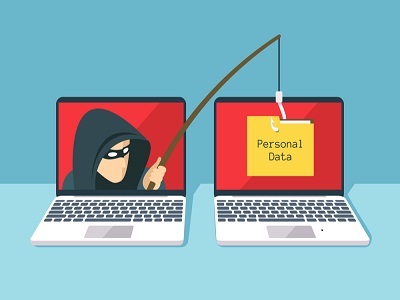Easy Ways of Identifying Phishing Scams
According to the Federal Trade Commission, phishing attacks are becoming more rampant and prevalent. This is attested to by the 162% rise in the number of reported cases over the past decade. Businesses and individuals lose an average of $4.5 billion every year as a result of phishing scams. Likewise, half of the active Internet users receive at least one phishing email every day.
Your best line of defense against phishing attacks is to avoid opening suspicious emails, links, or attachments. However, it’s difficult to distinguish between what’s malicious and what’s genuine because phishers have perfected their art. Phishers launch thousands of scams every day, and most of these scams end up being successful. Here are some easy ways of identifying phishing scams.

Don’t Trust the Sender’s Name
The most favorite tactic used by phishers is to spoof display names in the emails that they use to target you. Up to half of phishing emails spoof the names of brands or individuals. Once such emails get delivered, the recipient is likely to think that they are legitimate, judging from their appearance.
Worse still, most inboxes present the display name only, something that makes it easier for phishers to hoodwink unsuspecting recipients. Therefore, you shouldn’t trust the display name whenever you receive emails. Instead, check the address in the header to establish its authenticity. If it appears suspicious, don’t open it.
Check Out Spelling Mistakes
Typically, companies run their affairs professionally. Legitimate messages sent out over a corporate emailing system rarely have spelling mistakes or even poor grammar. Rarely do corporate communications departments send out emails to employees or customers without proofreading them.
This is one of the things that you should be in the lookout for if you want to avoid phishing scams. You should carefully read your emails and report anything that appears to be suspicious. If you receive an email that is riddled with errors, chances are that it’s a scam.
Be Wary of Salutations Used
You should analyze the salutation used in emails sent to you. Vague salutations such as “Dear Employee” should raise suspicious since legitimate emails often feature personal greetings. Some phishers ignore salutations altogether, more so when they use genuine-looking advertisements to perpetrate phishing scams.
Do Not Click on Suspicious Links
If you receive an instant message or email from an address that you don’t know yet is directing you to another website, you should be wary. Never heed to emails or direct messages that urge you to give personal data, including passwords or social security numbers. Legitimate companies can never ask for such information via email or instant message. Likewise, your bank doesn’t need details about your account since it already has the information.
Legit Businesses Use Domain Emails
In today’s digital-savvy world, companies are increasingly using domain names as a way of marketing themselves to clients. Chances are that every legit business that you have encountered uses domain emails. When you receive an email, taking a cursory glance at the sender’s address alone isn’t enough. Ascertain that there are no suspicious alterations such as additional letters or numbers in email addresses.
The Tone of the Communication Tells A Lot
Often, phishers invoke a sense of fear or urgency when undertaking their scams. Therefore, you should be wary of salutations or subject lines that claim about unauthorized login attempts on your account, or the account has been suspended. Likewise, a look at how an instant message or email is signed off can suggest whether it’s a phish or not. For instance, the lack of details about how to contact the company, or the sender strongly indicates that you are the target or a phishing scam.
Be Skeptical When Reading Emails
Phishing scams tend to be perpetrated by individuals who have an idea about how you operate. Besides, phishers are good at their job. They tend to use persuasive language, brand logos, and valid email addresses. However, this doesn’t make their activities legitimate.
To avoid falling prey to phishing scams, you should be skeptical when it comes to emails and instant messages. Do not open one even if it’s remotely suspicious. When you open a phishing email or message, it becomes easier for phishers to convince you to provide your personal information.
Even though more businesses and individuals are taking steps to protect themselves from phishing scams, those who are responsible for these malicious attacks continue to evolve and thrive. The methods that they use are getting smarter and harder to trace. Phishers will always target you even if you have the most secure Internet security system. They can also be quite crafty in their quest to steal your personal information. Do not be sucked into their scams. Instead, contact NuEduSEC and learn about our high-end cyber-security solutions that can keep phishers at bay.